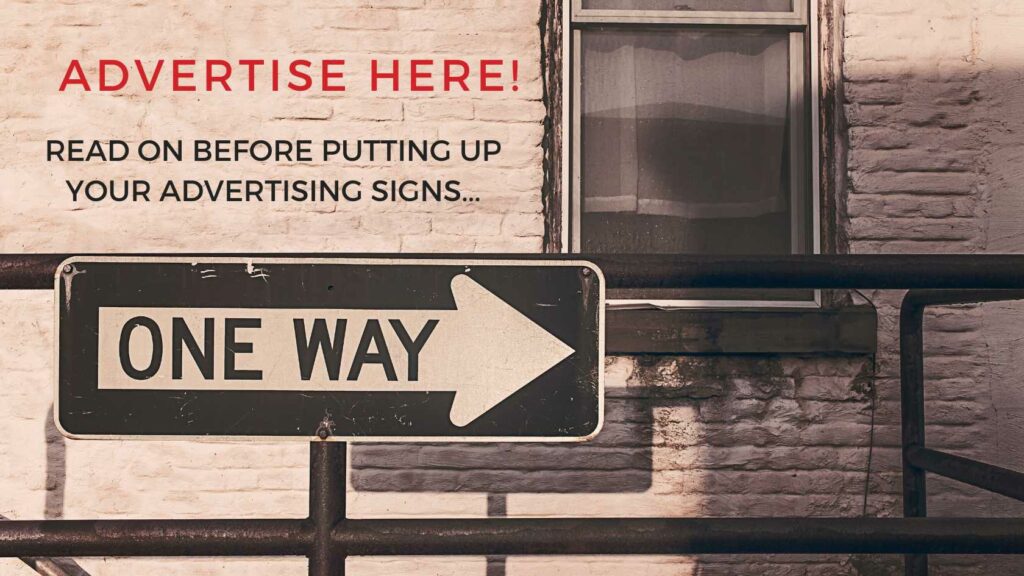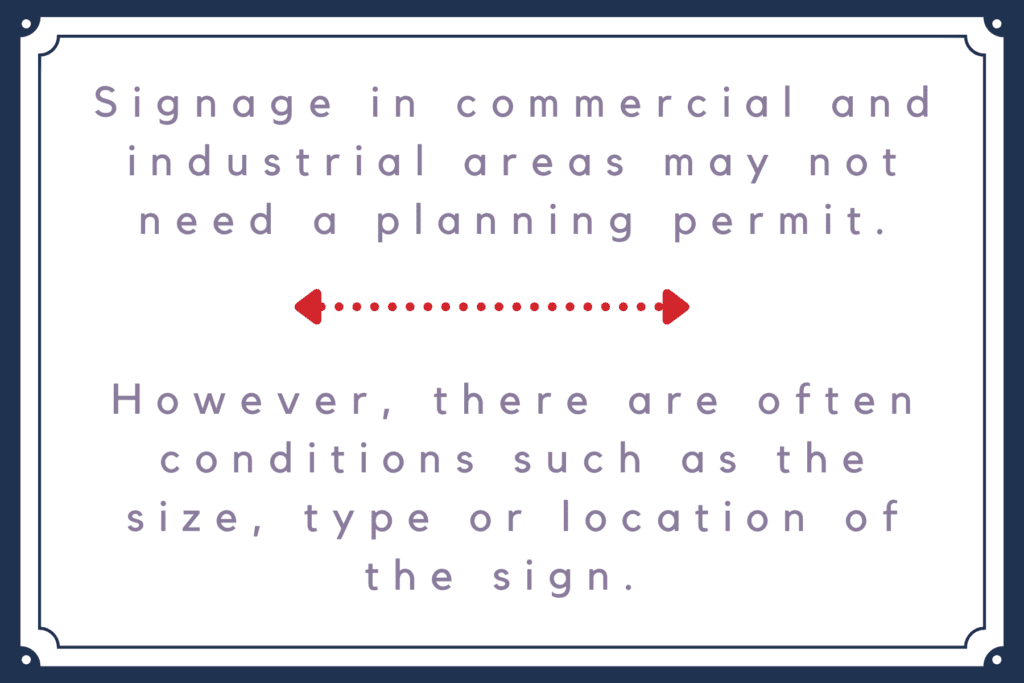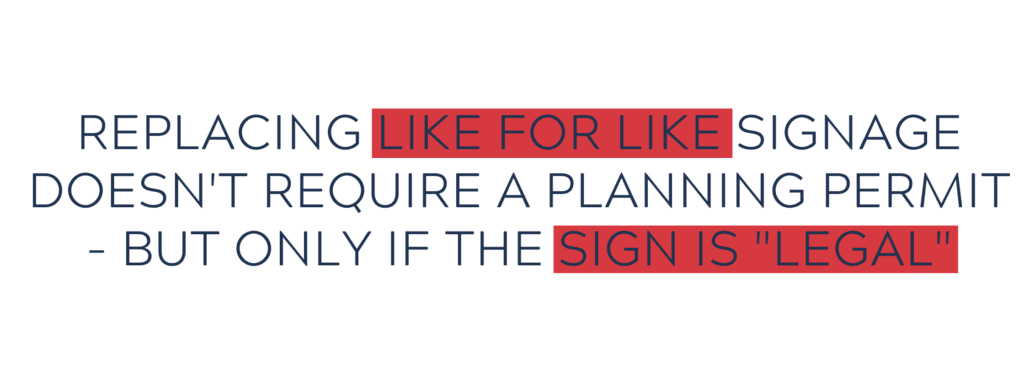06 Feb Business Signage


As you embark on your new business project it is important to know that it is not just the change of use or building works that may require a planning permit. The business signage you put up on and around the building may also need a planning permit.
Tips
- There are some types of signs that don’t require a planning permit, including a number of temporary signs such as for sale signs.
- A temporary a-frame sign on a footpath or nature strip requires permission from the local laws department of the Council rather than a planning permit. This is a separate process and each Council has different rules around displaying a-frame signs.
- Replacing an existing sign with the same type and size of sign doesn’t require a planning permit, but only if that sign was legally allowed to be up in the first instance. You will need to check with the Council if the sign can be replaced.
- The signage allowances for commercial and industrial areas are generally less restrictive than for sensitive areas such as residential zones. In these business zones there is an allowance for “as of right” signage that doesn’t need a planning permit.
- In a Residential Zone only a small home based business sign can be put up without a permit, so all businesses (for example childcare centres and medical centres) will need a planning permit to display all their signage.
Business sign applications are often done as a combined planning application with the use or development of the land. However, if the owner is unsure what signage they want or if they want to consider that later it can be done as a separate application down the track.

What Do you Need For a Planning Application?
The council will need some details on your proposal in order to assess an application for business signage. They need to know:
- The size and height of the sign.
- The details to be displayed on the sign (in colour).
- The location of the sign.
- Any details on supporting structures or internal or external illumination.
- How the signage fits in with the area and the local planning policies.
If more than one sign is proposed, each sign should be separately detailed. You may need to hire a draftsperson to draw up plans showing the proposed signage. For fairly simple applications you may be able to use some design software to add the signage to photographs of the building to represent your proposal instead.
Many councils have developed signage policies to provide guidance on the type of advertising signs that they prefer in different areas. The policies may include details on the preferred size, height or number of signs. The policies can also give guidance on other details such whether illumination is allowed and the types of signs that are encouraged. Your signage application should include an assessment against any signage policies.

If you aren’t sure if your business signage proposal will be supported you can discuss your proposal with the council or a private town planner to get some initial advice. If in doubt it is best to limit the total number of signs for a business. Councils tend to prefer one/two main signs rather than several smaller signs which might appear to clutter the site.

